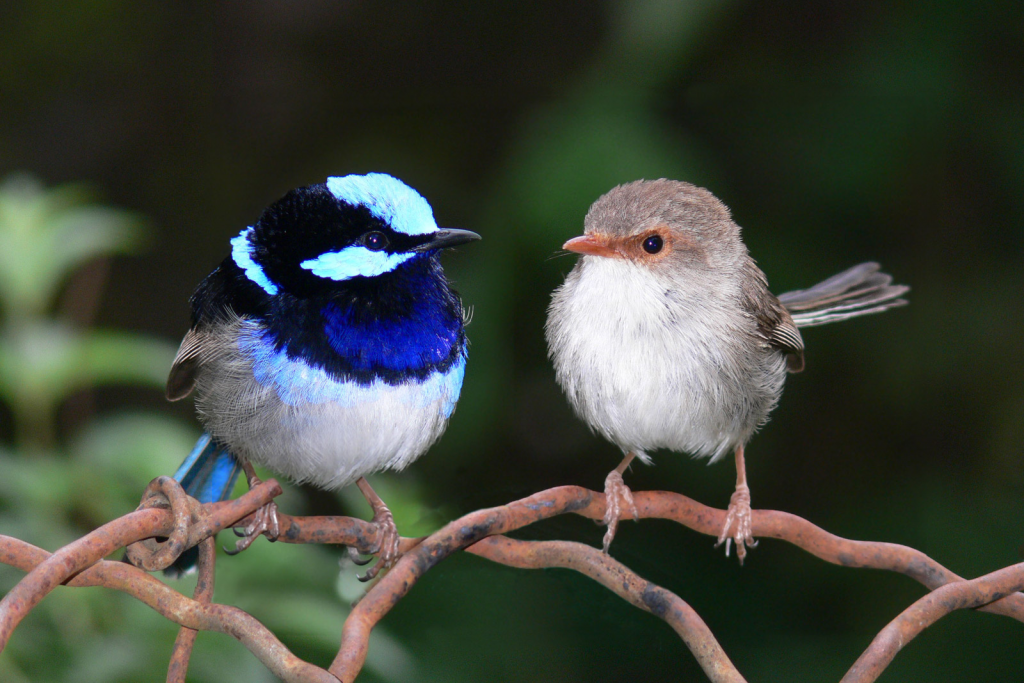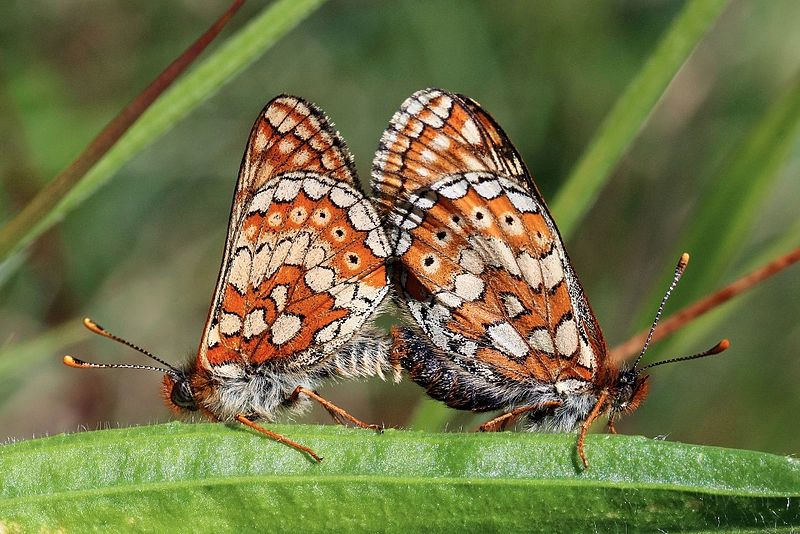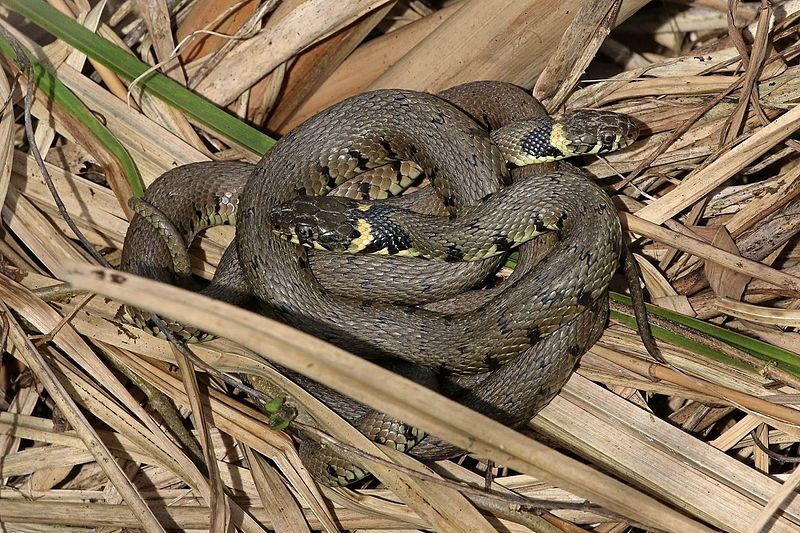8.2 Male versus Female
Check out this lovely pair of superb fairywrens (Malurus cyaneus)

and this mating pair of marsh fritillaries (Euphydryas aurinia),

and these Parson’s chameleons (Calumma parsonii)

or these two grass snakes (Natrix natrix)

Each pair includes one male and one female. If you were asked to distinguish the male from the female in each of these examples, how would you do it? What sort of information would you need? Basically, how do we distinguish males from females?
Points to Ponder
Is there one unifying characteristic that sets males and females apart, in all organisms—plants, animals, protists, etc.—that have male and female individuals?
- https://commons.wikimedia.org/wiki/File:Male_and_female_superb_fairy_wren.jpg ↵
- https://upload.wikimedia.org/wikipedia/commons/thumb/0/06/Marsh_fritillaries_%28Euphydryas_aurinia%29_mating.jpg/800px-Marsh_fritillaries_%28Euphydryas_aurinia%29_mating.jpg ↵
- https://commons.wikimedia.org/wiki/File:Grass_snakes_(Natrix_natrix)_mating_coil.jpg ↵

